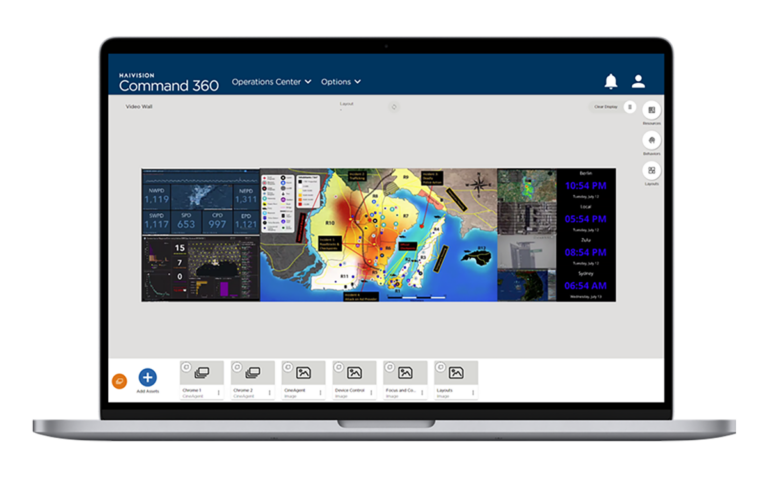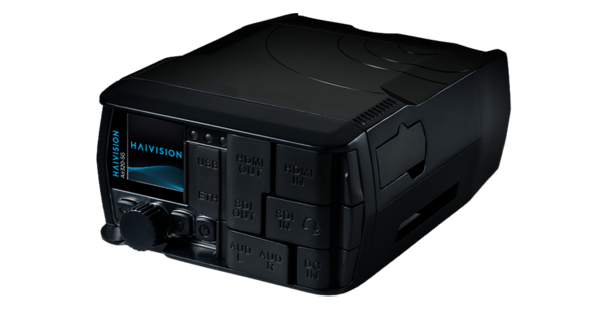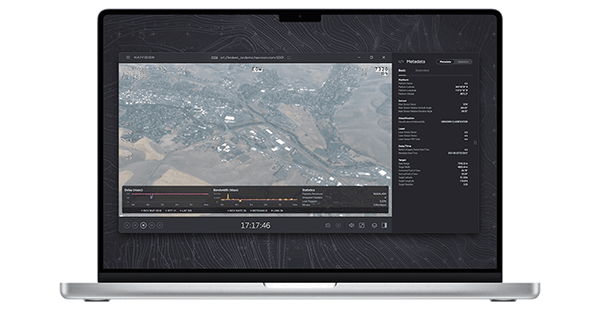For command and operation centers, real-time situational awareness is central to an organization’s objectives. Organizations with visual collaboration functions have a unique set of parameters. This often requires a major investment in both the time it takes to select the appropriate solution and the financial investment in a solution that checks all the boxes. Since all video wall manufacturers are not created equal, we’ve compiled a list of key factors you should consider when developing your video wall solution.
Looking for a solution to fit your needs? Click below to jump to the section you’d like to read first:
Where to Begin When Choosing a Video Wall Supplier
When a control room manager thinks of a video wall, the video wall display is always the first thing to come to mind. After all, video wall displays are central to visualization. Below are the top two questions we recommend you consider before deciding on a display.
How much space is needed for my video wall?
LCD and LED displays are the most common choices for video walls due to their narrow profiles. Both display options are easily wall-mounted, resulting in an overall seamless visual canvas. In comparison, other technologies like projection cubes and blended projection systems require far more space within the operations or command center. As a result, we always recommend that you consider how much space you have to work with before you decide which display option is right for your use case.
How will the system be used on a day-to-day basis?
If a system supports critical decision-making and, therefore, needs to be in use 24/7, it is important to select a display type that offers high reliability and longevity. Some displays, like LCD and LED, support around-the-clock use for years on end. Certain LCD and LED displays even offer redundant power supplies and other fail-safe capabilities for cases when downtime is simply not an option. What should you avoid? Stay clear of display types with consumable parts like lamp-based projection systems since these systems require regular maintenance for part replacement.
Not sure what else you should consider regarding video wall displays? Explore all display considerations.
Environment
In some cases, exceptional adaptability is a foremost consideration for video wall builds. Depending on your unique requirements, mobile visual collaboration solutions, for example, can offer a range of wall sizes, setup time, and portability.
Is it possible that environmental stressors will affect a system?
Anyone familiar with mission-critical operations has likely considered “environmental stressors” for one scenario or another. Extreme temperatures, humidity, and vibration can quickly damage a video wall system if it’s not specifically designed to tolerate these environmental stressors. Be sure to consider the harsh conditions your command center may encounter and select a video wall that will still perform under pressure.
What integrations are required?
Command and operation centers demand countless components to deliver the real-time visualization required to get the job done. Consider whether your video wall solution will need to integrate with external technology. Some examples of this could include conferencing systems, speakers, and lighting. If integration is needed, ensure complex integrations are possible within the video wall software you choose.
What other environmental factors could affect your video wall decisions? Explore all environmental considerations.
Software
In many ways, video wall software is considered to be central to any critical visualization operation. Here’s what you need to consider when selecting the backbone of your video wall.
How user-friendly does the software need to be?
Another way to think about this is: who will be operating the software? What functionality will each user need? The choice of software can come down to usability, especially if your scenario often means first-time users are operating it. Command 360 is built to offer advanced features that support situational awareness while remaining easy-to-use. The result is software that does not require extensive training to use yet still delivers on all the capabilities a command or operations center would need.
How many users will need to access the system?
Multiple-user support is a common feature operation and command centers require. If multiple users are required in situations where sensitive information is present, we recommend finding software that is permission-based. This allows management to set access parameters around the content sources for each user.
A video wall is nothing without the software behind it. Find out what other software considerations you should take into account.
Support
A video wall can – and should be – a long-term solution for your organization. Over the years, you’ll find that having the right support from your provider is critical.
Will technical support be in place for your new video wall?
As with any major investment, long-term technical support should be part of the package. When you’re in the final stages of your video wall decision, don’t forget to choose a provider with a strong, long-term technical support program.
Discover what support considerations you should keep in mind when evaluating video wall solutions.
Want to know more about the ins and outs of a video wall system before you commit to a video wall supplier? Reach out for a demo of our solution that can be adapted to your specific use case.



























